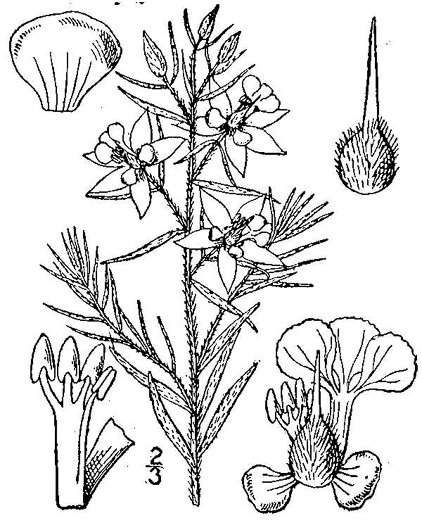Hovering over an image will enlarge it and point out features (works better on desktop than on mobile).
![]() A camera indicates there are pictures.
A camera indicates there are pictures.
![]() A speaker indicates that a botanical name is pronounced.
A speaker indicates that a botanical name is pronounced.
![]() A plus sign after a Latin name indicates that the species is further divided into varieties or subspecies.
A plus sign after a Latin name indicates that the species is further divided into varieties or subspecies.
Most habitat and range descriptions were obtained from Weakley's Flora.
Your search found 1 taxon in the family Krameriaceae, Krameria family, Rhatany family, as understood by PLANTS National Database.

Common Name: Trailing Ratany, Sandspur, Prairie-bur, Trailing Krameria
Weakley's Flora: (4/14/23) Krameria lanceolata FAMILY: Krameriaceae
SYNONYMOUS WITH PLANTS National Database: Krameria lanceolata FAMILY: Krameriaceae
Habitat: Longleaf pine sandhills (in GA and FL), westwards (in KS, OK, and TX) in rocky, sandy, or gravelly prairies
Common in GA Coastal Plain
Native to Georgia
Your search found 1 taxon. You are on page PAGE 1 out of 1 pages.


